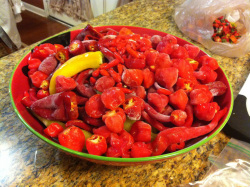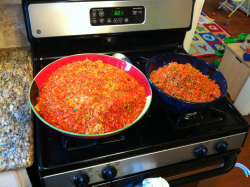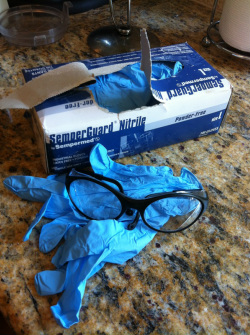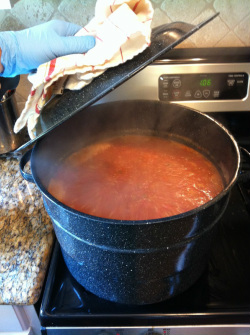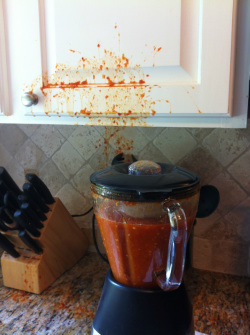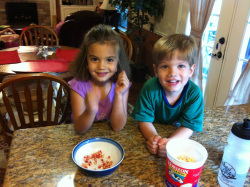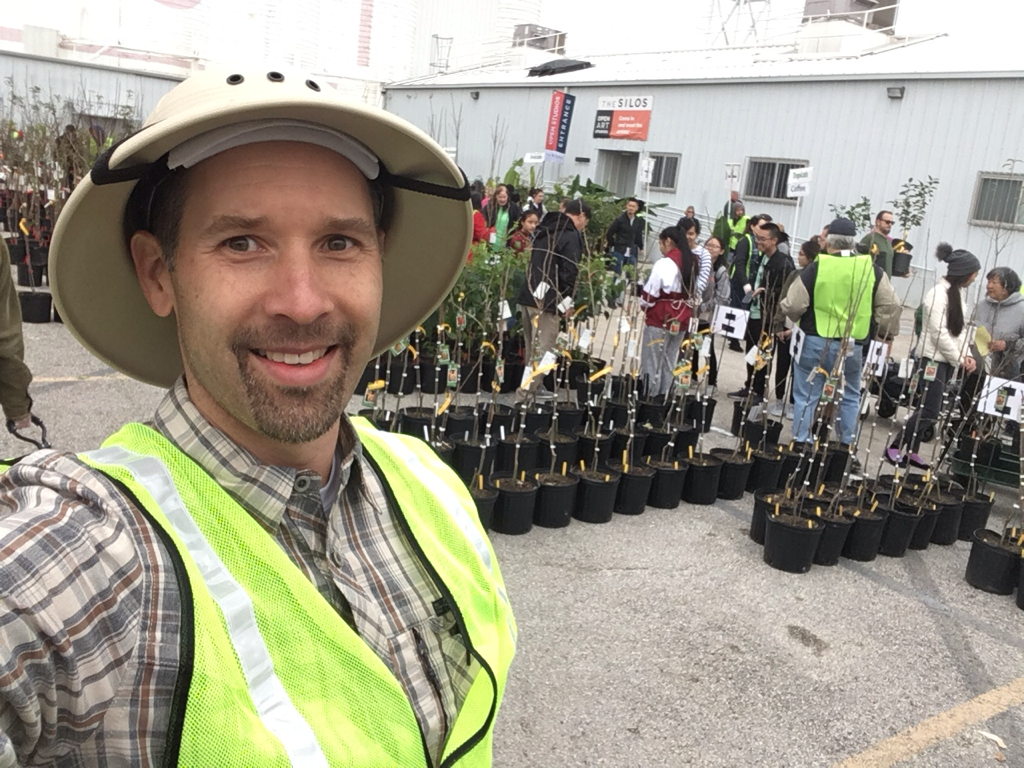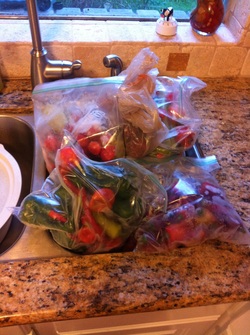
All year I've been saving and freezing hot peppers from the seven chiles I planted in the strawberry beds (poblano, habanero, jalepeno, cayenne, hungarian hot wax, tabasco, and the hottest pepper on earth, aka, the ghost chile), and once the freezer was full (approximately 6 gallons of peppers), it was time to get to work. I chopped up all the peppers in the food processor, threw in a cup of salt and 10-12 cloves of garlic, and 1.5 gallons of white vinegar (5% acidity). I brought the whole mix to a rolling boil for a about five minutes, and then got ready to puree it into hot sauce.
Our blender had been left outside on the back porch and was really dirty, and I didn't feel like cleaning it out, so I decided to just borrow one from my neighbor. I thought it was strange that it didn't have many settings, but didn't give it much more thought. I filled it with a quart of the cooked pepper mix, put on the lid, and turned it on......
!!!EXPLOSION!!!
The near boiling mix of lava and hell fire erupted from the blender, blasting me in the face and spraying all over the kitchen. It turns out that it was not a blender at all, but a margarita maker. Margarita makers are apparently very powerful, and are only meant to be used with little bit of liquid and a bunch of ice. Thankfully I was wearing my safety glasses! So I had to spend the next half hour cleaning up the kitchen, and then another half hour deep cleaning our blender so I could finish up. At long last, I finally finished blending and bottling all 2.75 gallons of sauce (approximately 45 8-oz. bottles).
I have to say, this is the best hot sauce I've ever made, and I look forward to eating it on almost everything from now on. It's nice and thick, very hot but still tolerable, and it has a tangy delicious flavor. I don't know how long this batch will last me, but I hope it can get me through to the next pepper crop next spring. Based on my experience this year, next year I will probably only plant habaneros, jalepenos, and cayennes in their own raised bed. This year I had planted them in the strawberry bed in hopes that the chile plants would help keep the strawberry plants alive by shading them during the hottest part of the summer, but they cast too much shade and the strawberry plants died anyway.
Poblano (2,500 - 5,000 Scoville Units) - Thin-walled chile that doesn't really get hot until it turns red. Productive, but not my favorite. Chiles tended to get damaged by bugs/birds before they were fully ripe.
Habanero (100,000 - 350,000 Scoville Units) - Wonderful chile! Super hot, but with an excellent tangy flavor. The plant is disease resistant, and very productive. My 2nd favorite chile.
Jalepeno (2,500 - 5,000 Scoville Units) - Best all-around chile, period. It's hot without being too hot, very flavorful, thick-walled, and endlessly versatile. The plant is very productive, disease resistant, and tastes wonderful sliced up on just about any dish.
Cayenne (30,000 - 50,000 Scoville Units) - A delicious chile, but not especially productive. The peppers have great flavor and great heat, and I don't think any hot sauce would be complete without them.
Hungarian Hot Wax (5,000 - 15,000 Scoville Units) - Big yellow to orange chiles with moderate heat. I'm not crazy about these simply because they're so big. They can get too hot to eat on a salad if left on the plant too long. The plant is moderately productive, but I probably wont grow these again.
Tabasco (30,000 - 50,000 Scoville Units) - A hot and tasty, yet very small chile, on a very productive plant. It has no pest problems, and a beautiful looking plant when full of chiles. The only drawback is that they're really time consuming to pick and de-stem.
Bhut Jolokia (Ghost Chile) (855,000-2,100,000 Scoville Units) - Not particularly productive, but a nice big healthy plant. I can't speak to the flavor of the chiles, because I'm not brave enough to eat one raw. I plan on making a special batch of sauce with mostly ghost chiles.
